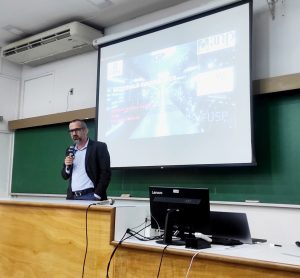
Publicações de Gustavo Dalpian
de Freitas, Andre Luiz Martins; Caturello, Naidel A. M. S.; Tofanello, Aryane; Kaneko, Ulisses F.; Correa, Lucas E.; dos Reis, Ricardo Donizeth; Ferreira, Fabio Furlan; Dalpian, Gustavo M.; Souza, José A Releasing trapped excitons in 2D perovskites via pressure annealing: A cooperative interplay between lattice strain and electronic structure. Journal Article Em: Mater. Chem. Front., 2024, ISSN: 2052-1537. Resumo | Links | BibTeX | Tags: Sabino, Fernando P.; Zhao, Xin Gang; Dalpian, Gustavo M.; Zunger, Alex Impact of symmetry breaking and spin-orbit coupling on the band gap of halide perovskites Journal Article Em: Phys. Rev. B, vol. 110, iss. 3, pp. 035160, 2024. Resumo | Links | BibTeX | Tags: Farigliano, Lucas M.; Negreiros, Fabio R.; Dalpian, Gustavo M. Phase Transitions of CsPbBr3: Evaluating Perovskite Behavior Over Different Time Scales Journal Article Em: Mater. Adv., pp. -, 2024. Resumo | Links | BibTeX | Tags: Ogoshi, Elton; Popolin-Neto, Mário; Acosta, Carlos Mera; Nascimento, Gabriel M.; Rodrigues, João N. B.; Oliveira, Osvaldo N.; Paulovich, Fernando V.; Dalpian, Gustavo M. Learning from machine learning: the case of band-gap directness in semiconductors Journal Article Em: Discov Mater, vol. 4, não 1, 2024, ISSN: 2730-7727. Resumo | Links | BibTeX | Tags: General Medicine Ogoshi, Elton; Popolin-Neto, Mário; Acosta, Carlos Mera; Nascimento, Gabriel M.; Rodrigues, João N. B.; Oliveira, Osvaldo N.; Paulovich, Fernando V.; Dalpian, Gustavo M. Learning from machine learning: the case of band-gap directness in semiconductors Journal Article Em: Discov Mater, vol. 4, não 1, 2024, ISSN: 2730-7727. Resumo | Links | BibTeX | Tags: General Medicine Morais, Eliane A.; Caturello, Naidel A. M. S.; Lemes, Maykon A.; Ferreira, Henrique; Ferreira, Fabio F.; Acuña, Jose J. S.; Brochsztain, Sergio; Dalpian, Gustavo M.; Souza, Jose A. Rashba Spin Splitting Limiting the Application of 2D Halide Perovskites for UV-Emitting Devices Journal Article Em: ACS Applied Materials & Interfaces, vol. 0, não 0, pp. null, 2024, (PMID: 38217498). Resumo | Links | BibTeX | Tags: Sabino, Fernando P.; Dalpian, Gustavo M.; Zunger, Alex Light-Induced Frenkel Defect Pair Formation Can Lead to Phase-Segregation of Otherwise Miscible Halide Perovskite Alloys Journal Article Em: Advanced Energy Materials, vol. n/a, não n/a, pp. 2301539, 2023. Resumo | Links | BibTeX | Tags: Alloys of halide perovskite, Frenkel pair, Phase segregation Espinosa-García, W. F.; Dalpian, Gustavo M.; Osorio-Guillén, J. M. Intrinsic defects in sulvanite compounds: the case of transparent Cu3TaS4 and absorbing Cu3VSe4 Journal Article Em: Journal of Alloys and Compounds, pp. 172264, 2023, ISSN: 0925-8388. Resumo | Links | BibTeX | Tags: Defects, First-principles calculations, P-type materials, Semiconductors, Sulvanite Sabino, Fernando; Zhao, Xingang; Dalpian, Gustavo M.; Zunger, Alex Correlation between band gap shifts due to symmetry breaking and spin-orbital coupling in halide perovskites Working paper 2023. Resumo | Links | BibTeX | Tags: Bonadio, Ariany; Sabino, Fernando P.; Freitas, André L. M.; Felez, Marissol R.; Dalpian, Gustavo M.; Souza, Jose A. Comparing the Cubic and Tetragonal Phases of MAPbI3 at Room Temperature Journal Article Em: Inorganic Chemistry, vol. 62, não 19, pp. 7533-7544, 2023, (PMID: 37126785). Resumo | Links | BibTeX | Tags: Yadav, Asha; Acosta, Carlos Mera; Dalpian, Gustavo M.; Malyi, Oleksandr I. First-principles investigations of 2D materials: Challenges and best practices Journal Article Em: Matter, vol. 6, não 9, pp. 2711-2734, 2023, ISSN: 2590-2385. Resumo | Links | BibTeX | Tags: 2D materials, materials design, materials realization, optical properties Padilha, Antonio Claudio Michejevs; Rocha, Alexandre Reily; Dalpian, Gustavo M. 17 – Ordered vacancy compounds: the case of the Mangéli phases of TiO2 Book Section Em: Kumar, Vijay; Som, Sudipta; Sharma, Vishal; Swart, Hendrik C. (Ed.): Metal Oxide Defects, pp. 533-565, Elsevier, 2023, ISBN: 978-0-323-85588-4. Resumo | Links | BibTeX | Tags: Computational simulation, Density functional theory, DFT, Magnéli phases, Memristive devices, Memristor, Titanium oxide Freitas, Andre Luiz Martins; Tofanello, Aryane; Sabino, Fernando Pereira; Felez, Marissol Rodrigues; Morais, Eliane Aparecida; Brochsztain, Sergio; Acuña, Jose Javier Sáez; Dalpian, Gustavo M.; Souza, Jose Antonio Finite-Size Effects on Cs3Cu2I5 0D Electronic Nanostructures for Ultraviolet-Emitting Applications Journal Article Em: ACS Applied Nano Materials, vol. 6, não 9, pp. 7196-7205, 2023. Resumo | Links | BibTeX | Tags: Bezzon, Vinícius Danilo Nonato; Caturello, Naidel Antonio Moreira Santos; Dalpian, Gustavo M.; Ferreira, Fabio Furlan Crystal structure determination and DFT analysis of doxorubicin hydrochloride for controlled-release drug formulations Journal Article Em: Journal of Molecular Structure, vol. 1294, pp. 136412, 2023, ISSN: 0022-2860. Resumo | Links | BibTeX | Tags: Doxorubicin hydrochloride, Powder X-ray diffraction, Rietveld refinement, Simulated annealing approach Ogoshi, Elton; Ferreira, Henrique; Rodrigues, João N. B.; Dalpian, Gustavo M. Exploring chemical compound space with a graph-based recommender system Working paper 2023. Resumo | Links | BibTeX | Tags: Materials Science Ussui, Valter; Lazar, Dolores Ribeiro; de Lima, Nelson; Arata, Anelyse; Ribeiro, Fabio; Dalpian, Gustavo M.; Marchi, Juliana; Paschoal, José Octavio Room temperature plasticity of zirconia-yttria-titania ceramics: Experimental indications and structural modelling Journal Article Em: PAC, vol. 16, não 4, pp. 367–373, 2023, ISSN: 2406-1034. Resumo | Links | BibTeX | Tags: Ceramics and Composites2024
@article{deFreitas2025,
title = {Releasing trapped excitons in 2D perovskites via pressure annealing: A cooperative interplay between lattice strain and electronic structure.},
author = {Andre Luiz Martins de Freitas and Naidel A. M. S. Caturello and Aryane Tofanello and Ulisses F. Kaneko and Lucas E. Correa and Ricardo Donizeth dos Reis and Fabio Furlan Ferreira and Gustavo M. Dalpian and José A Souza},
url = {https://pubs.rsc.org/en/content/articlelanding/2025/qm/d4qm00780h},
doi = {10.1039/d4qm00780h},
issn = {2052-1537},
year = {2024},
date = {2024-12-11},
urldate = {2025-00-00},
journal = {Mater. Chem. Front.},
publisher = {Royal Society of Chemistry (RSC)},
abstract = {The characteristic photon emissions in low-dimensional hybrid perovskites are strongly related to inherent distortions in the crystal lattice. These cooperative distortions, influenced by organic spacers and the confined BX6 octahedra arrangement, allow for the manipulation and control of the emitted photon energy and its nature. Here, we observe a complex dynamic where photon emissions at both low and high energies emerge, depending on octahedral distortion and the application of hydrostatic pressure. Our results demonstrate that samples featuring different octahedra sizes and distortions, yet having a common organic spacer (BA2MAPb2Br7 and BA2MAPb2I7), show low-energy photon emission attributed to self-trapped excitons (STEs) which can be tuned towards to free exciton states (FE) through pressure annealing. Experimental and theoretical results revealed that octahedral distortions in 2D perovskites play a crucial role in controlling emission, disclosing their complex structure and electronic relationship.},
keywords = {},
pubstate = {published},
tppubtype = {article}
}
@article{PhysRevB.110.035160,
title = {Impact of symmetry breaking and spin-orbit coupling on the band gap of halide perovskites},
author = {Fernando P. Sabino and Xin Gang Zhao and Gustavo M. Dalpian and Alex Zunger},
url = {https://link.aps.org/doi/10.1103/PhysRevB.110.035160},
doi = {10.1103/PhysRevB.110.035160},
year = {2024},
date = {2024-07-30},
urldate = {2024-07-01},
journal = {Phys. Rev. B},
volume = {110},
issue = {3},
pages = {035160},
publisher = {American Physical Society},
abstract = {Halide perovskite (HP) materials have recently emerged as a class of semiconductors with immense promise for various optoelectronic applications, ranging from solar cells to light-emitting diodes. One of the unique attributes of HPs is their tunable band gaps with different factors governing their value. The first factor is related to relativistic corrections [“mass-Darwin,” connected to the 𝑛𝑠2 lone pairs, and spin-orbit coupling (SOC)] that induce an orbital shift or degeneracy splitting, resulting in a band-gap reduction. The second factor involves the structural configuration: in HPs the local symmetry of each Wyckoff position tends to be broken, inducing an opening of the band gap. Based on high-throughput density functional theory calculations, this paper systematically studies a possible self-cancelation on the band-gap correction for HPs when the polymorphous configuration—structural effects—and the SOC—electronic effects—are included. Our results indicate that the nature of interplay between SOC and symmetry breaking (SB) is that they are independent decoupling effects to describe the band-gap magnitude in halide perovskites. As a result of that, we observe a transitivity of the band-gap description; i.e., if we know the band gap of halide perovskites without SB and SOC, we can independently add the effects of band-gap reduction due to SOC and band-gap opening due to SB, regardless of the order in which these effects are considered.},
keywords = {},
pubstate = {published},
tppubtype = {article}
}
@article{D4MA00216D,
title = {Phase Transitions of CsPbBr3: Evaluating Perovskite Behavior Over Different Time Scales},
author = {Lucas M. Farigliano and Fabio R. Negreiros and Gustavo M. Dalpian},
url = {http://dx.doi.org/10.1039/D4MA00216D},
doi = {10.1039/D4MA00216D},
year = {2024},
date = {2024-06-04},
urldate = {2024-01-01},
journal = {Mater. Adv.},
pages = {-},
publisher = {RSC},
abstract = {Halide perovskites have gained relevance in the field of solar cells due to their remarkable electro-optical properties, which enable efficient conversion of solar energy into electricity. Despite their promising characteristics, challenges such as long-term stability and structural complexity demand exceptional attention and dedication in the research on these materials. Their inherent soft nature, high atom mobility (especially of the halides) and the unconventional dynamics of structural motifs (halide octahedra) make them interesting from a fundamental point of view as well. The study focuses on understanding phase transitions in CsPbBr3 perovskite, considering the importance of the dynamic properties it exhibits. The phase transitions of the CsPbBr3 perovskite were studied through ab initio NPT molecular dynamics simulations considering several different temperatures. By taking into account the average structures over a simulation time of 45 ps after thermalization, we predict phase transitions between 300 and 325 K, as well as between 400 and 450 K, in line with previous experimental findings reported in the literature. Furthermore, through the analysis of the angles within the octahedron (Br-Pb-Br) and between octahedra (Pb-Br-Pb), the mechanism underlying the phase transitions is understood, and the structural anomalies previously reported [Svirskas et al., Journal of Materials Chemistry A, 2020, 8, 3523] near 220 K are identified. In addition to the results obtained by performing long-time averages, we also conducted an analysis of the implications of using different time windows when calculating the average properties of interest. In this case, we observed a more complex pattern, where the material exhibits various structures depending on the exposure time and temperature, which aligns with the polymorphic nature of these materials. Our results show that, depending on the type of experiment that is being performed, different analysis, with averages considered over different times, must be performed. Long-time averages can be compared to x-ray diffraction experiments, while short-time averages should be compared to experiments that track the local structure of the material, such as PDF or Raman. Our results also indicate that phase transitions in CsPbBr3 are not as abrupt as previously considered, posing new challenges for the experimental observation of these features.},
keywords = {},
pubstate = {published},
tppubtype = {article}
}
@article{Ogoshi2024,
title = {Learning from machine learning: the case of band-gap directness in semiconductors},
author = {Elton Ogoshi and Mário Popolin-Neto and Carlos Mera Acosta and Gabriel M. Nascimento and João N. B. Rodrigues and Osvaldo N. Oliveira and Fernando V. Paulovich and Gustavo M. Dalpian},
url = {https://link.springer.com/article/10.1007/s43939-024-00073-x},
doi = {10.1007/s43939-024-00073-x},
issn = {2730-7727},
year = {2024},
date = {2024-02-29},
urldate = {2024-12-00},
journal = {Discov Mater},
volume = {4},
number = {1},
publisher = {Springer Science and Business Media LLC},
abstract = {
keywords = {General Medicine},
pubstate = {published},
tppubtype = {article}
}
@article{Ogoshi2024b,
title = {Learning from machine learning: the case of band-gap directness in semiconductors},
author = {Elton Ogoshi and Mário Popolin-Neto and Carlos Mera Acosta and Gabriel M. Nascimento and João N. B. Rodrigues and Osvaldo N. Oliveira and Fernando V. Paulovich and Gustavo M. Dalpian},
url = {https://repositorio.usp.br/directbitstream/1ee44f9f-13de-45ad-bb4b-fb7f0cb95272/3183025%20falta%20rep.pdf},
doi = {10.1007/s43939-024-00073-x},
issn = {2730-7727},
year = {2024},
date = {2024-02-29},
urldate = {2024-12-00},
journal = {Discov Mater},
volume = {4},
number = {1},
publisher = {Springer Science and Business Media LLC},
abstract = {
keywords = {General Medicine},
pubstate = {published},
tppubtype = {article}
}
@article{doi:10.1021/acsami.3c16541,
title = {Rashba Spin Splitting Limiting the Application of 2D Halide Perovskites for UV-Emitting Devices},
author = {Eliane A. Morais and Naidel A. M. S. Caturello and Maykon A. Lemes and Henrique Ferreira and Fabio F. Ferreira and Jose J. S. Acuña and Sergio Brochsztain and Gustavo M. Dalpian and Jose A. Souza},
url = {https://doi.org/10.1021/acsami.3c16541},
doi = {10.1021/acsami.3c16541},
year = {2024},
date = {2024-01-13},
journal = {ACS Applied Materials & Interfaces},
volume = {0},
number = {0},
pages = {null},
abstract = {Layered lead halide perovskites have attracted much attention as promising materials for a new generation of optoelectronic devices. To make progress in applications, a full understanding of the basic properties is essential. Here, we study 2D-layered (BA)2PbX4 by using different halide anions (X = I, Br, and Cl) along with quantum confinement. The obtained cell parameter evolution, supported by experimental measurements and theoretical calculations, indicates strong lattice distortions of the metal halide octahedra, breaking the local inversion symmetry in (BA)2PbCl4, which strongly correlates with a pronounced Rashba spin-splitting effect. Optical measurements reveal strong photoluminescence quenching and a drastic reduction in the PL quantum yield in this larger band gap compound. We suggest that these optical results are closely related to the appearance of the Rashba effect due to the existence of a local electric dipole. The results obtained in ab initio calculations showed that the (BA)2PbCl4 possesses electrical polarization of 0.13 μC/cm2 and spin-splitting energy of about 40 meV. Our work establishes that local octahedra distortions induce Rashba spin splitting, which explains why obtaining UV-emitting materials with high PLQY is a big challenge.},
note = {PMID: 38217498},
keywords = {},
pubstate = {published},
tppubtype = {article}
}
2023
@article{https://doi.org/10.1002/aenm.202301539,
title = {Light-Induced Frenkel Defect Pair Formation Can Lead to Phase-Segregation of Otherwise Miscible Halide Perovskite Alloys},
author = {Fernando P. Sabino and Gustavo M. Dalpian and Alex Zunger},
url = {https://onlinelibrary.wiley.com/doi/abs/10.1002/aenm.202301539},
doi = {https://doi.org/10.1002/aenm.202301539},
year = {2023},
date = {2023-10-11},
journal = {Advanced Energy Materials},
volume = {n/a},
number = {n/a},
pages = {2301539},
abstract = {Abstract Alloys of ABX3 halide perovskites (HP) exhibit unique phase behavior compared to traditional III-V and II-VI semiconductor alloys used in solar cells. While the latter typically have good mutual miscibility when their mixed components are size matched, and phase-segregate when size mismatched, HP alloys show good miscibility in the dark but can phase-segregate under light. Quantum mechanical calculations described herein reveal light-induced defect formation and migration hold the key. Specifically, the interaction between a halogen vacancy VX with halogen interstitial Xi forming together a Frenkel-pair defect emerges as the enabler for phase-segregation in HP alloys. At a threshold bromine composition in the Br-I alloys, the photogenerated holes in the valence band localize, creating thereby a doubly-charged iodine Frenkel-pair (VI + Ii)2+. Faster migration of iodine over bromine interstitial into the vacant iodine VI site leads to the formation of iodine-rich and iodine-depleted regions, establishing phase-segregation. Removal of the mobile defects–the agent of segregation–by dark thermal annealing, supplies the opposing force, leading to reversal of phase-segregation. This atomistic understanding can enable some control of the phase-segregation by selecting substituting elements on the B site–such as replacing some Pb by Sn–that are unable to form stable Frenkel defects.},
keywords = {Alloys of halide perovskite, Frenkel pair, Phase segregation},
pubstate = {published},
tppubtype = {article}
}
@article{ESPINOSAGARCIA2023172264,
title = {Intrinsic defects in sulvanite compounds: the case of transparent Cu3TaS4 and absorbing Cu3VSe4},
author = {W. F. Espinosa-García and Gustavo M. Dalpian and J. M. Osorio-Guillén},
url = {https://www.sciencedirect.com/science/article/pii/S0925838823035673},
doi = {https://doi.org/10.1016/j.jallcom.2023.172264},
issn = {0925-8388},
year = {2023},
date = {2023-09-25},
urldate = {2023-01-01},
journal = {Journal of Alloys and Compounds},
pages = {172264},
abstract = {Sulvanites are semiconducting compounds with the chemical formula Cu3TMX4 where TM = V, Nb, Ta; X = S, Se, Te. Semiconductor electronic and optical properties are highly influenced by intrinsic defects such as vacancies, antisites, and atoms residing in interstitial positions inside the crystal structure. Even though intrinsic defects are extremely important, very little is known about defects in sulvanites. Here we report the properties of all intrinsic defects in two representative sulvanite compounds (Cu3TaS4 and Cu3VSe4) by using computational quantum mechanical methods. Our results indicate that Cu vacancies are the most frequent defects in these compounds, also responsible for limiting the possibility of their n-type doping and setting the pinning of the Fermi energy to positions close to the valence band. These results explain why as-grown sulvanites are usually p-type and open a path for understanding the search for ways to design and tune the properties of these compounds.},
keywords = {Defects, First-principles calculations, P-type materials, Semiconductors, Sulvanite},
pubstate = {published},
tppubtype = {article}
}
@workingpaper{2023APS..MARS41008S,
title = {Correlation between band gap shifts due to symmetry breaking and spin-orbital coupling in halide perovskites},
author = {Fernando Sabino and Xingang Zhao and Gustavo M. Dalpian and Alex Zunger},
url = {https://ui.adsabs.harvard.edu/abs/2023APS..MARS41008S/abstract},
year = {2023},
date = {2023-02-13},
urldate = {2023-01-01},
booktitle = {APS March Meeting Abstracts},
volume = {2023},
pages = {S41.008},
series = {APS Meeting Abstracts},
abstract = {The calculation of band gaps of Halide perovskites (HP) differs from analogous calculations of more conventional semiconductors in that two additional factors need to be considered: (i) creation of a structural polymorphous network (a distribution of octahedral titling for different octahedra in cubic structures) - which increase the band gaps and (ii) spin-orbital coupling (SOC) - generally reducing the band gaps for compounds with high Z atoms. This raises the question to what extent effects (i) and (ii) compensate each other or if they are correlated in some way. We addressed this question by a series of DFT band structure calculations on cubic ABX3 compounds where effects (i) and (ii) are both included; or both excluded, or including one at the time. For the most studied inorganic halide perovskites, the SOC - induced band gap reduction has a low correlation with the band gap increase due to polymorphous network formation. The accuracy of treating the gap shifts due to (i) and (ii) as independent corrections for nominal cubic Pm-3m structures will be presented and discussed.},
keywords = {},
pubstate = {published},
tppubtype = {workingpaper}
}
@article{doi:10.1021/acs.inorgchem.3c00874,
title = {Comparing the Cubic and Tetragonal Phases of MAPbI3 at Room Temperature},
author = {Ariany Bonadio and Fernando P. Sabino and André L. M. Freitas and Marissol R. Felez and Gustavo M. Dalpian and Jose A. Souza},
url = {https://doi.org/10.1021/acs.inorgchem.3c00874},
doi = {10.1021/acs.inorgchem.3c00874},
year = {2023},
date = {2023-01-01},
journal = {Inorganic Chemistry},
volume = {62},
number = {19},
pages = {7533-7544},
abstract = {Stability and maintenance of the crystal structure are the main drawbacks of the application of organic–inorganic perovskites in photovoltaic devices. The ΔT = 62 K robust shift of the structural phase transition observed here allows us to conduct a comprehensive study at room temperature of the tetragonal versus cubic phase on MAPbI3. The absence of the shift in the cubic transition for all-inorganic CsPbI3 samples confirms the importance of both orientation and dynamics of the organic cations. Our results provide a unique opportunity to evaluate the physical properties of both cubic and tetragonal phases of MAPbI3 at the same temperature, eliminating different phonon effects as possible causes for different properties. Besides higher electrical resistivity, the perovskite cubic phase presents a faster charge carrier lifetime than the tetragonal phase and partial PL quenching, pointing toward increased trap-assisted nonradiative recombination. The light absorption coefficient in the cubic phase is larger than the absorption in the tetragonal phase in the green region.},
note = {PMID: 37126785},
keywords = {},
pubstate = {published},
tppubtype = {article}
}
@article{YADAV20232711,
title = {First-principles investigations of 2D materials: Challenges and best practices},
author = {Asha Yadav and Carlos Mera Acosta and Gustavo M. Dalpian and Oleksandr I. Malyi},
url = {https://www.sciencedirect.com/science/article/pii/S2590238523002370},
doi = {https://doi.org/10.1016/j.matt.2023.05.019},
issn = {2590-2385},
year = {2023},
date = {2023-01-01},
journal = {Matter},
volume = {6},
number = {9},
pages = {2711-2734},
abstract = {Summary
The successful exfoliation of graphene from graphite has brought significant attention to predicting new two-dimensional (2D) materials that can be realized experimentally. As a consequence, first-principles studies of novel 2D materials become routine, with thousands of papers published every year. What makes these studies interesting is that they predict new materials that have not been realized yet but should be a panacea for topological insulators, next-generation battery electrodes, novel solar cell absorbers, etc. There is no doubt that some of the proposed materials can provide a specific solution, and their properties/performance can be confirmed experimentally. At the same time, there are many false predictions because of the computational errors or the Legoland approach used to study 2D materials. To reduce the gap between theoretical and experimental works, we performed a systematic review of computational and Legoland factors that should be minimized in future theoretical works.},
keywords = {2D materials, materials design, materials realization, optical properties},
pubstate = {published},
tppubtype = {article}
}
The successful exfoliation of graphene from graphite has brought significant attention to predicting new two-dimensional (2D) materials that can be realized experimentally. As a consequence, first-principles studies of novel 2D materials become routine, with thousands of papers published every year. What makes these studies interesting is that they predict new materials that have not been realized yet but should be a panacea for topological insulators, next-generation battery electrodes, novel solar cell absorbers, etc. There is no doubt that some of the proposed materials can provide a specific solution, and their properties/performance can be confirmed experimentally. At the same time, there are many false predictions because of the computational errors or the Legoland approach used to study 2D materials. To reduce the gap between theoretical and experimental works, we performed a systematic review of computational and Legoland factors that should be minimized in future theoretical works.@incollection{MICHEJEVSPADILHA2023533,
title = {17 - Ordered vacancy compounds: the case of the Mangéli phases of TiO2},
author = {Antonio Claudio Michejevs Padilha and Alexandre Reily Rocha and Gustavo M. Dalpian},
editor = {Vijay Kumar and Sudipta Som and Vishal Sharma and Hendrik C. Swart},
url = {https://www.sciencedirect.com/science/article/pii/B9780323855884000143},
doi = {https://doi.org/10.1016/B978-0-323-85588-4.00014-3},
isbn = {978-0-323-85588-4},
year = {2023},
date = {2023-01-01},
urldate = {2023-01-01},
booktitle = {Metal Oxide Defects},
pages = {533-565},
publisher = {Elsevier},
series = {Metal Oxides},
abstract = {Defects typically appear in materials in very limited quantities, usually of the order of 1016–1019/cm3. In some cases, however, these defects can be observed in a much larger concentration, enough to change the stoichiometry of the parent compound and even change their crystal structure. An important class of these materials is the ordered vacancy compounds, first proposed for CdIn2Se4. Other compounds, such as hybrid perovskites, can also present ordered vacancy compounds, such as Cs2SnI6, derived from CsSnI3. In this chapter, we will discuss ordered vacancy compounds derived from the transition metal oxide compound TiO2. These are known as the Magnéli phases of TiO2 and can be constructed by removing oxygen atoms from the host lattice. There are several different polymorphs that can be created by changing the quantity of oxygen vacancies, including Ti2O3, Ti3O5, and Ti4O7 (based on the formula TinO2n−1). We will discuss the structural determination of these materials that can be created by sliding planes from the rutile TiO2 structure. Also, the electronic structure of these compounds is characteristic of intermediate band materials and can be directly correlated to the properties of oxygen vacancies in TiO2. Lastly, we will discuss the potential applications of this kind of materials that can include memristors and batteries.},
keywords = {Computational simulation, Density functional theory, DFT, Magnéli phases, Memristive devices, Memristor, Titanium oxide},
pubstate = {published},
tppubtype = {incollection}
}
@article{doi:10.1021/acsanm.3c00242,
title = {Finite-Size Effects on Cs3Cu2I5 0D Electronic Nanostructures for Ultraviolet-Emitting Applications},
author = {Andre Luiz Martins Freitas and Aryane Tofanello and Fernando Pereira Sabino and Marissol Rodrigues Felez and Eliane Aparecida Morais and Sergio Brochsztain and Jose Javier Sáez Acuña and Gustavo M. Dalpian and Jose Antonio Souza},
url = {https://doi.org/10.1021/acsanm.3c00242},
doi = {10.1021/acsanm.3c00242},
year = {2023},
date = {2023-01-01},
urldate = {2023-01-01},
journal = {ACS Applied Nano Materials},
volume = {6},
number = {9},
pages = {7196-7205},
abstract = {The potential to produce ultraviolet (UV) light-emitting devices has attracted significant interest in interdisciplinary fields, particularly in the use of 0D halide nanostructures due to their straightforward synthesis methods and exceptional efficiency in optoelectronics. Here, we present a systematic study involving nanostructure synthesis and significant changes in the electronic structure caused by finite-size effects. We have focused on the investigation of size effects on the UV-light emitting properties of all-inorganic Cs3Cu2I5 halide. We observe that bulk particles present a pronounced bright-blue emission at 440 nm with a high quantum yield of 80%. Very small quantum dots nanostructures (6–10 nm) reveal a significant shift of the photoluminescence peak down to ∼395 nm, close to the UV-A region, but with a quantum yield reduction of 10%. Surface engineering to obtain very small nanoparticles free from defects at the nanocrystal surface is crucial for maintaining a high quantum efficiency, allowing their use in UV-emitting devices.},
keywords = {},
pubstate = {published},
tppubtype = {article}
}
@article{BEZZON2023136412,
title = {Crystal structure determination and DFT analysis of doxorubicin hydrochloride for controlled-release drug formulations},
author = {Vinícius Danilo Nonato Bezzon and Naidel Antonio Moreira Santos Caturello and Gustavo M. Dalpian and Fabio Furlan Ferreira},
url = {https://www.sciencedirect.com/science/article/pii/S0022286023015028},
doi = {https://doi.org/10.1016/j.molstruc.2023.136412},
issn = {0022-2860},
year = {2023},
date = {2023-01-01},
urldate = {2023-01-01},
journal = {Journal of Molecular Structure},
volume = {1294},
pages = {136412},
abstract = {Doxorubicin hydrochloride (DOX) is a widely used chemotherapeutic drug that inhibits the growth of cancer cells. Many DOX-based controlled-release systems have been proposed to reduce toxicity. However, knowledge of its crystal structure is essential for optimizing drug release processes and designing co-crystals or salts with different release properties. Although DOX has been extensively studied, no crystal structure is available in the Cambridge Structural Database or literature. In this work, we determine the crystal structure of DOX using a simulated annealing approach based on powder X-ray diffraction data. We confirm its validation by Rietveld refinement and molecular cohesion by using a molecular geometry check tool. We also use density functional theory to optimize the DOX structure and obtain the minimum energy conformation, H-bond donor/acceptor species, charge localization, and crystal structure parameters. This study provides essential structural information on DOX that can be used to rationalize new modified-release dosage forms and to design co-crystals or salts with different release properties.},
keywords = {Doxorubicin hydrochloride, Powder X-ray diffraction, Rietveld refinement, Simulated annealing approach},
pubstate = {published},
tppubtype = {article}
}
@workingpaper{ogoshi2023exploring,
title = {Exploring chemical compound space with a graph-based recommender system},
author = {Elton Ogoshi and Henrique Ferreira and João N. B. Rodrigues and Gustavo M. Dalpian},
url = {https://arxiv.org/abs/2306.16496},
doi = {10.48550/arXiv.2306.16496},
year = {2023},
date = {2023-01-01},
urldate = {2023-01-01},
abstract = {With the availability of extensive databases of inorganic materials, data-driven approaches leveraging machine learning have gained prominence in materials science research. In this study, we propose an innovative adaptation of data-driven concepts to the mapping and exploration of chemical compound space. Recommender systems, widely utilized for suggesting items to users, employ techniques such as collaborative filtering, which rely on bipartite graphs composed of users, items, and their interactions. Building upon the Open Quantum Materials Database (OQMD), we constructed a bipartite graph where elements from the periodic table and sites within crystal structures are treated as separate entities. The relationships between them, defined by the presence of ions at specific sites and weighted according to the thermodynamic stability of the respective compounds, allowed us to generate an embedding space that contains vector representations for each ion and each site. Through the correlation of ion-site occupancy with their respective distances within the embedding space, we explored new ion-site occupancies, facilitating the discovery of novel stable compounds. Moreover, the graph's embedding space enabled a comprehensive examination of chemical similarities among elements, and a detailed analysis of local geometries of sites. To demonstrate the effectiveness and robustness of our method, we conducted a historical evaluation using different versions of the OQMD and recommended new compounds with Kagome lattices, showcasing the applicability of our approach to practical materials design.},
keywords = {Materials Science},
pubstate = {published},
tppubtype = {workingpaper}
}
@article{Ussui2022,
title = {Room temperature plasticity of zirconia-yttria-titania ceramics: Experimental indications and structural modelling},
author = {Valter Ussui and Dolores Ribeiro Lazar and Nelson de Lima and Anelyse Arata and Fabio Ribeiro and Gustavo M. Dalpian and Juliana Marchi and José Octavio Paschoal},
doi = {10.2298/pac2204367u},
issn = {2406-1034},
year = {2023},
date = {2023-00-00},
urldate = {2023-00-00},
journal = {PAC},
volume = {16},
number = {4},
pages = {367--373},
publisher = {National Library of Serbia},
abstract = {
mechanical properties. However, such materials cannot undergo plastic
deformation at room temperature due to their high hardness and brittleness
values, hindering machinability. To overcome these limitations, we propose a
zirconia-yttria-titania ceramics, based on zirconia containing 3mol% yttria
and up to 15mol% titania. The zirconia-yttria-titania powders were
synthesized by co-precipitation method, uniaxially pressed and sintered at
1400?C/5 h. Sample characterizations were carried out by X-ray diffraction,
scanning electron microscopy and mechanical properties through Vickers
hardness and toughness measurements. Compared to the Y-TZP ceramics, the
yttria stabilised tetragonal zirconia ceramics co-doped with 10mol%Ti showed
noticeable increase of tetragonality parameter, higher toughness and lower
hardness values, indicating plasticity at room temperature. Furthermore, the
atomistic simulation by Density Functional Theory methodology suggests the
occurrence of spatial arrangement of the atoms, explaining the proposed
plasticity.
keywords = {Ceramics and Composites},
pubstate = {published},
tppubtype = {article}
}
mechanical properties. However, such materials cannot undergo plastic
deformation at room temperature due to their high hardness and brittleness
values, hindering machinability. To overcome these limitations, we propose a
zirconia-yttria-titania ceramics, based on zirconia containing 3mol% yttria
and up to 15mol% titania. The zirconia-yttria-titania powders were
synthesized by co-precipitation method, uniaxially pressed and sintered at
1400?C/5 h. Sample characterizations were carried out by X-ray diffraction,
scanning electron microscopy and mechanical properties through Vickers
hardness and toughness measurements. Compared to the Y-TZP ceramics, the
yttria stabilised tetragonal zirconia ceramics co-doped with 10mol%Ti showed
noticeable increase of tetragonality parameter, higher toughness and lower
hardness values, indicating plasticity at room temperature. Furthermore, the
atomistic simulation by Density Functional Theory methodology suggests the
occurrence of spatial arrangement of the atoms, explaining the proposed
plasticity.</jats:p>
Destaques de Gustavo Dalpian
Orientados e Supervisionados por Gustavo Dalpian

Lucas Martin Farigliano
Vínculo: Pós-Doutorado
Instituição: Universidade de São Paulo (IF-USP)
Laboratório: MattDesign
Projeto: Construção de Plataformas Nanoestruturadas para Prevenção e Detecção da COVID-19 (CAPES – Epidemias)

Henrique Ferreira
Vínculo: Doutorado
Instituição: Universidade Federal do ABC (UFABC)
Laboratório: MattDesign
Projeto: Construção de Plataformas Nanoestruturadas para Prevenção e Detecção da COVID-19 (CAPES – Epidemias)
Currículo Lattes – ORCID – Google Scholar

Lucas Bandeira
Vínculo: Mestrado
Instituição: Universidade Federal do ABC (UFABC)
Laboratório: MatDesign
Projeto: Em breve

Fernando Sabino
Vínculo: Pós-Doutorado
Instituição: Universidade de São Paulo (USP)
Laboratório: MatDesign
Projeto: Em breve
Currículo Lattes – ORCID – Google Scholar
Defesas de orientados por Gustavo Dalpian
Desculpe, nenhuma publicação.




